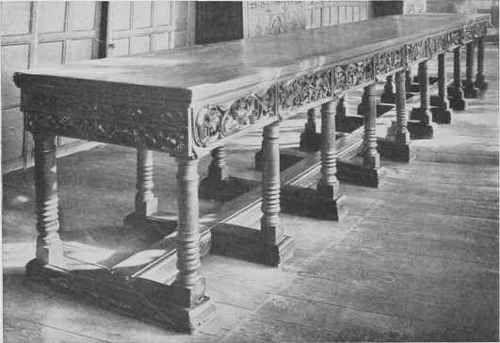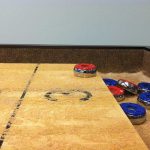
5 Important Moments In Shuffleboard History
Table shuffleboard history begins with a bit of a mystery: no one knows the exact origin of the game, but we do know that it began gaining ground in Great Britain during the 1500s. Modern shuffleboard tables are most likely directly descended from a game called “shove a penny,” a name that pretty accurately described the activity of the game.
As the precursor to today’s shuffleboard tables, the English upper class played “shove a penny” (originally called “shove-groat” and later “shovelboard”) on enormous tables, sometimes as long as 30 feet in length. Pennies and other coins would be shot down the table in an attempt to get them as near to the end without falling off. Sound familiar? Check out these five classic moments in shuffleboard history that helped to define the game as we know and love it today.

Five Important Moments In Shuffleboard History
1. Henry the VIII: The First Shuffleboard Celebrity
The upper class were not the only ones who loved shuffleboard. History shows that the game was beloved by peasants, as well, and found fans both young and old. Gambling on the game was common, so it’s no surprise that one of the first references to shuffleboard comes from the Royal Privy Expenses of 1532. Henry the VIII is recorded as having lost 9 pounds to Lord William. Even though King Henry could play whenever he liked, he decided that the “commoners” and soldiers could not. Therefore, he banned shuffleboard on the grounds that it was too distracting. This did not curtail the game, and it actually fell out of favor in high society instead. The time was ripe for shuffleboard tables to make the leap from the parlor to the tavern.
2. Shuffleboard Comes To America
English settlers brought shuffleboard to America, making their way along the coast while spreading knowledge of this simple and fun competitive game. Arthur Miller gave shuffleboard its first literary mention in his 1692 play The Crucible with the following line: “In 1692, there was a good supply of ne’er-do-wells who dallied at the shuffleboard in Bridget Bishop’s Tavern.” This also marks the first recorded mention of shuffleboard in the New World! Although the presence of shuffleboard tables in bars gave the pious ammunition against the game, its growth could not be stopped.
3. Shuffleboard On Trial
In New Hanover, Pennsylvania, “The State vs. John Bishop” had to decide whether shuffleboard was a game of chance or a game of skill. The distinction is important for determining whether or not the game can be played at bars without gambling licenses. Luckily for all the shuffleboard patrons in the 19th century, the judge ruled that shuffleboard was definitely a game of skill.
4. Prohibition Hits Hard
Unfortunately, shuffleboard popularity began to decline in the early part of the 20th century. Due to Prohibition, taverns and saloons across the country were forced to close down, leaving shuffleboard tables to gather dust. With the repeal of Prohibition and the Great Depression on the horizon, people would soon need another outlet. Shuffleboard began to rise in popularity again.
5. The Resurgence
In the 1940s and 1950s, shuffleboard attained its highest degree of fame yet, especially with shuffleboard tables like the Rock-Ola. National shuffleboard tournaments began to convene, the largest of which had over 500 teams participating.
Not only is the game a fun and surprisingly challenging one, but shuffleboard history is rather interesting as well. From the palaces of England to the bars downtown, shuffleboard tables have provided people with hundreds of years of enjoyment. You can have that same enjoyment in your own home with any one of the fine, handcrafted tables available at McClure Tables.
Photo Credit: Chest of Books



